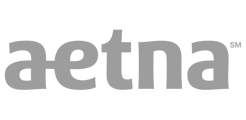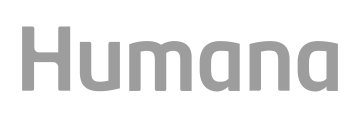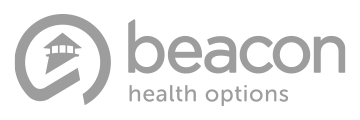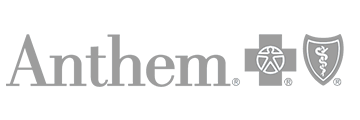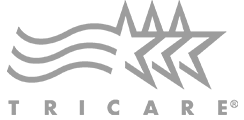Recovery
Understanding the HALT Acronym
Medically Reviewed By
Written By
Last medically reviewed March 10, 2025
Recovery
Medically Reviewed By
Written By
Last medically reviewed March 10, 2025
Treating drug or alcohol addiction is about more than just not engaging in that behavior. It’s a mental health journey that requires understanding the reasons you crave a drug and finding better ways to handle it. It’s about tuning into your body’s reactions and knowing what you need to feel good without the aid of a drug.
Willpower alone isn’t enough for most people to overcome an addiction. It takes a lot of introspection and attention to your body’s needs to continue recovery over time and prevent relapsing.
HALT is one of the key mental health principles that helps you self-assess your needs when you’re feeling vulnerable and craving your substance of choice. But what does HALT stand for, and how can you use it in your addiction recovery journey?
In Psychology and addiction recovery, HALT stands for:[1]
These are considered “risk states” as they represent the times when people are most vulnerable to relapse. It is named HALT because it is a reminder for people to stop what they are doing (halt) and assess themself when they are feeling cravings or about to engage in impulsive behavior.
These stressors cause hormonal and physical body changes such as low blood sugar, low energy, or increased ghrelin (hunger-inducing hormone), which can all intensify cravings.
Eating, sleeping, relationships, and a safe environment are crucial basic needs every human has. When these needs are not met, we tend not to think rationally, leading to poor decisions. This has a reactionary effect, as we don’t always act in ways that are beneficial for our well-being or recovery journey.
For example, when you’re feeling really hungry, are you more likely to cook a hearty meal or grab the quickest ready meal in sight, regardless of its nutritional value? Most of us would grab the ready meal, even if cooking a meal might make us feel better in the long run.
When we’re hungry, angry, lonely, or tired, we act on impulse, taking actions that make us feel immediately better, even if they don’t benefit us long-term. [2][3][4][5]
It’s hard to recognize when one of these four stressors is to blame for our impulsive behavior — we just know we don’t feel good, and we want that feeling to go away.
In some individuals, these impulsive actions can lead to addiction, including overspending to feel better, gambling, and substance abuse. For example, studies show that social isolation can increase the risk of opioid addiction.[6]
Understanding HALT is the first step toward controlling our impulsive behaviors and finding healthier alternatives that will benefit us in the long term.
It’s widely accepted that impulsivity can lead to drug use.[7] Feeling hungry, angry, lonely, or tired stops us from thinking rationally and puts us in fight or flight mode, often acting without considering the consequences.
When you’re experiencing one of these four stressors, it can manifest as a craving response. So it’s natural that when you’re feeling overwhelmed by one of these four risk states, you’re more likely to feel compelled to relapse so you can feel better — even though you know that comfort won’t last long.
Implementing HALT into your recovery plan will help you self-assess your cravings and understand what your body actually needs so you can comfort yourself in a healthy way. In doing so, you can better manage your cravings and learn more about your body’s needs, slowly dissociating the link between your addiction and needing it to feel good. Instead, HALT teaches you to create coping mechanisms instead of instinctively reverting to addiction behaviors.
Making HALT part of your addiction recovery plan will help you put self-care at the forefront of your treatment plan. Here are a few helpful tips to implement HALT into your daily routine.
It isn’t a natural instinct to ask yourself if you’re feeling hungry, angry, lonely, or tired. Instead, we experience our feelings and then act to try and stop them as quickly as possible, even if our methods aren’t helpful for our overall health. That’s why you need to make HALTing a habit.
By scheduling daily check-ins with yourself, regardless of your craving status, you remind yourself of the importance of this practice. It will also help you understand what each of these stressors feels like to you, helping you identify your personal triggers. This will help HALT become a habit, which you can then draw upon when you’re feeling cravings instead of acting on impulse.
While creating a HALT habit makes it easier to remember to use the technique when you are experiencing cravings over time, it is easy to default to impulsive behaviors instead of engaging in self-assessment. Again, self-assessment is not second nature for many people. We mostly feel and react without analyzing why.
To give yourself the best chance of HALTing, leave reminders around your home where you’re most likely to see them when experiencing a craving. You could leave post-it notes on your work computer and on the fridge. You could wear a bracelet with “HALT” on it as a reminder whenever you look at your wrist.
The more you remind yourself of HALT’s existence as a tool for self-assessment, the more likely you are to reach for it when you’re feeling impulsive and about to relapse from a craving.
Understanding why you’re experiencing cravings is only part of the HALT process. Once you know why you’re craving something, you need to address the root cause. The quicker you can address your needs, the faster your cravings will disappear.
Having an action plan for each of your stressors will help you quickly take positive action, reducing the risk of impulsive behavior. This could mean keeping protein bars handy to address hunger, doing deep breathing exercises when you’re feeling angry, or having a trusted loved one to talk to when you’re experiencing loneliness.
HALT is a great tool to prevent relapse and help you on the road to addiction recovery. But before you can stop your cravings, you need to start your addiction treatment plan.
At Southeast Addiction Center, we help people take their first steps to recovery by creating personalized treatment plans and providing support for their recovery journey. Our expert team can help you better understand your addiction so you can cultivate the tools you need to overcome it. With access to support groups and wellness tools, you’ll feel confident as you start the road to overcoming your addiction.
Reach out to our friendly team today to start your addiction treatment journey. Together, we’ll find the right path to overcome your addiction.
In Psychology and addiction recovery, HALT stands for Hunger, Anger, Loneliness, and Tiredness.
HALT stressors cause cravings and impulsive behavior, which can lead to relapsing with addictive substances as a way of seeking comfort.
HALT is used as a tool for self-assessment to understand where your cravings are coming from so you can address your needs instead of seeking immediate relief through risky behaviors like substance abuse.
[1] HALT: Pay attention to these four stressors on your recovery (2024, October 18). Cleveland Clinic. Retrieved from https://health.clevelandclinic.org/halt-hungry-angry-lonely-tired on 2025, January 23
[2] Hormones that are released during hunger affect decision making | ScienceDaily (2016, May 9). Retrieved from https://www.sciencedaily.com/releases/2016/05/160509085807.htm on 2025, January 11.
[3] Pearlstein, J. G., Johnson, S. L., Modavi, K., Peckham, A. D., & Carver, C. S. (2019). Neurocognitive mechanisms of emotion-related impulsivity: The role of arousal. Psychophysiology, 56(2), e13293. https://pmc.ncbi.nlm.nih.gov/articles/PMC6404980/
[4] UI researchers find connection between loneliness and impulsive behavior – The Daily Iowan (n.d). Retrieved from https://dailyiowan.com/2019/12/18/ui-researchers-find-connection-between-loneliness-and-impulsive-behavior/ on 2025, January 11.
[5] Grant, J. E., & Chamberlain, S. R. (2018). Sleepiness and impulsivity: Findings in non-treatment seeking young adults. Journal of behavioral addictions, 7(3), 737–742.
https://pmc.ncbi.nlm.nih.gov/articles/PMC6426387/
[6] Christie N. C. (2021). The role of social isolation in opioid addiction. Social cognitive and affective neuroscience, 16(7), 645–656. https://pmc.ncbi.nlm.nih.gov/articles/PMC8259283/
[7] de Wit H. (2009). Impulsivity as a determinant and consequence of drug use: a review of underlying processes. Addiction Biology, 14(1), 22–31. https://pmc.ncbi.nlm.nih.gov/articles/PMC3640851/

